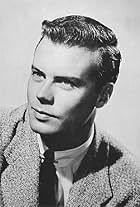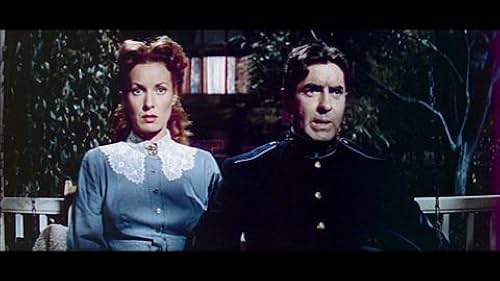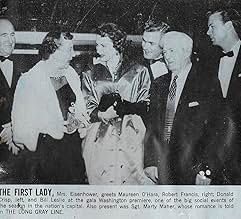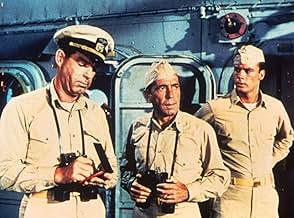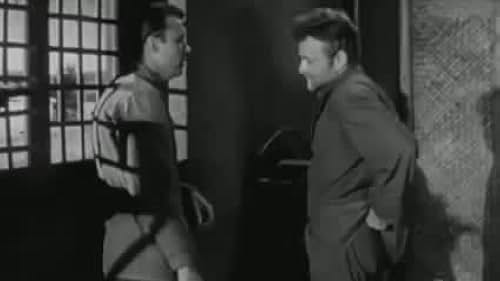Robert Francis(1930-1955)
- Actor
Relatively new to Hollywood, handsome Robert Francis was a rising young actor and deemed California's "Golden Boy" on the verge of 1950's cinematic stardom, when on July 31 , 1955, he, along with two others, perished in a private plane crash just after takeoff in Burbank, California.
Robert Charles Francis was born on February 26, 1930, in Glendale, California, where his parents ran a family pharmacy. Growing up he showed early interests in art and in sports, particularly skiing. As a teen he attended Pasadena City College from 1946 to 1948 after completing the tenth grade at Wilson Junior High School. He graduated with a "junior college degree.
The teenager had major designs on becoming an Olympic skier (he was taught by his older brother and the young boy was a ski shop operator at one point). Fate stepped in, however, when he was spotted by a Hollywood talent scout while sunning near the Santa Monica pier. Told his handsome, likable, all-American looks could make a cinematic impression, he decided to take a chance and began signed up for acting classes.
A three-year stint in the U.S. Army (1950-1953) interrupted this progress but, following his discharge, he attended the Batomi Schneider Drama Workshop (Ms. Schneider was a Universal drama coach). Max Arnow, head talent at Columbia, took a liking to Robert and managed to set up a screen test for studio head Harry Cohn who was looking for fresh talent for an upcoming film The Caine Mutiny (1954). Though his inexperience showed through in the test, Robert's courteous but quiet intensity and manly inner rebellion sparked an certain interest in Cohn and the young man was signed to a contract.
Not only did Columbia give Robert the prime role of Ensign Willie Keith in The Caine Mutiny (1954), Bob held his own alongside a formidable group of male stalwarts including Humphrey Bogart, José Ferrer, Van Johnson and Fred MacMurray. His scenes also included a romantic subplot opposite dark-haired beauty May Wynn, who took her stage moniker from the character she played in this film. Robert, sporting the 1950s brush-cut standard of the day, was voted one of Screen World's "Promising Personalities of 1954" upon the successful release of the movie.
Clean-cut and athletic, the young actor continued to show exceptional poise and restraint in his next three co-leads as well, finding a strong niche as odd-man-out military types. Capitalizing on his promising debut, Robert was top-billed in the western They Rode West (1954) as a cavalry captain who bucks against the system and his captain Philip Carey as he selflessly tends to Indians during a malaria epidemic . His co-star, again, was Ms. Wynn again as well as the lovely Donna Reed.
Top-billed as well in his third film, The Bamboo Prison (1954), which was similar but not quite up to the Oscar-winning standards of Stalag 17 (1953) as it reveals the brutalities of POW life, Robert plays a Korean War POW sergeant who attempts to extract valuable information from his captors. He co-stars opposite Brian Keith, as a fellow POW corporal, who initially thinks (as do the other American POWs) that Robert is a traitor for "cooperating" with the enemy.
Robert's fourth and final film was a third-billed part as an ill-fated West Point cadet in the sentimental John Ford bio-drama The Long Gray Line (1955) starring Tyrone Power as a legendary Irish-born West Point sergeant and Maureen O'Hara his altruistic wife. The picture did well.
While Columbia was keen on propelling Robert to top-grade stardom, Robert was showing a strong, keen interest in aviation. At one point, this ill-fated passion put him into contact with eccentric producer/director/aviator billionaire Howard Hughes and the two men frequently went flying together, with young Francis often at the controls of Hughes' planes
Just two weeks before Robert was to start filming a loan-out picture, MGM's romantic western Tribute to a Bad Man (1956) starring James Cagney, Robert decided to pilot a Beechcraft Bonanza owned by friend and fellow actor Joe Kirkwood Jr.. Also on board would be Kirkwood's business partner, the Hollywood agent George Irving Meyer, 38, an experienced WW II pilot, and his lady friend, aspiring actress Audrey Ann Schneider (aka Ann Russell), 24. Immediately following their shaky takeoff from Lockheed Air Terminal in Burbank, the plane's engine sputtered and lost power. Francis, a still relatively inexperienced pilot, managed to avoid a crowd at nearby Valhalla Cemetery, and crashed into a parking lot where it burst into flames, killing all three instantly.
The 25-year-old actor was survived by his parents, James William and Lillian Warnock Francis, and an older brother and sister (Bill, Lillian). He was buried at Forest Lawn Memorial Park. Actor Don Dubbins was recast in the Cagney film. A tragic ending for such a promising young man who had a major career cruelly taken from him.
Robert Charles Francis was born on February 26, 1930, in Glendale, California, where his parents ran a family pharmacy. Growing up he showed early interests in art and in sports, particularly skiing. As a teen he attended Pasadena City College from 1946 to 1948 after completing the tenth grade at Wilson Junior High School. He graduated with a "junior college degree.
The teenager had major designs on becoming an Olympic skier (he was taught by his older brother and the young boy was a ski shop operator at one point). Fate stepped in, however, when he was spotted by a Hollywood talent scout while sunning near the Santa Monica pier. Told his handsome, likable, all-American looks could make a cinematic impression, he decided to take a chance and began signed up for acting classes.
A three-year stint in the U.S. Army (1950-1953) interrupted this progress but, following his discharge, he attended the Batomi Schneider Drama Workshop (Ms. Schneider was a Universal drama coach). Max Arnow, head talent at Columbia, took a liking to Robert and managed to set up a screen test for studio head Harry Cohn who was looking for fresh talent for an upcoming film The Caine Mutiny (1954). Though his inexperience showed through in the test, Robert's courteous but quiet intensity and manly inner rebellion sparked an certain interest in Cohn and the young man was signed to a contract.
Not only did Columbia give Robert the prime role of Ensign Willie Keith in The Caine Mutiny (1954), Bob held his own alongside a formidable group of male stalwarts including Humphrey Bogart, José Ferrer, Van Johnson and Fred MacMurray. His scenes also included a romantic subplot opposite dark-haired beauty May Wynn, who took her stage moniker from the character she played in this film. Robert, sporting the 1950s brush-cut standard of the day, was voted one of Screen World's "Promising Personalities of 1954" upon the successful release of the movie.
Clean-cut and athletic, the young actor continued to show exceptional poise and restraint in his next three co-leads as well, finding a strong niche as odd-man-out military types. Capitalizing on his promising debut, Robert was top-billed in the western They Rode West (1954) as a cavalry captain who bucks against the system and his captain Philip Carey as he selflessly tends to Indians during a malaria epidemic . His co-star, again, was Ms. Wynn again as well as the lovely Donna Reed.
Top-billed as well in his third film, The Bamboo Prison (1954), which was similar but not quite up to the Oscar-winning standards of Stalag 17 (1953) as it reveals the brutalities of POW life, Robert plays a Korean War POW sergeant who attempts to extract valuable information from his captors. He co-stars opposite Brian Keith, as a fellow POW corporal, who initially thinks (as do the other American POWs) that Robert is a traitor for "cooperating" with the enemy.
Robert's fourth and final film was a third-billed part as an ill-fated West Point cadet in the sentimental John Ford bio-drama The Long Gray Line (1955) starring Tyrone Power as a legendary Irish-born West Point sergeant and Maureen O'Hara his altruistic wife. The picture did well.
While Columbia was keen on propelling Robert to top-grade stardom, Robert was showing a strong, keen interest in aviation. At one point, this ill-fated passion put him into contact with eccentric producer/director/aviator billionaire Howard Hughes and the two men frequently went flying together, with young Francis often at the controls of Hughes' planes
Just two weeks before Robert was to start filming a loan-out picture, MGM's romantic western Tribute to a Bad Man (1956) starring James Cagney, Robert decided to pilot a Beechcraft Bonanza owned by friend and fellow actor Joe Kirkwood Jr.. Also on board would be Kirkwood's business partner, the Hollywood agent George Irving Meyer, 38, an experienced WW II pilot, and his lady friend, aspiring actress Audrey Ann Schneider (aka Ann Russell), 24. Immediately following their shaky takeoff from Lockheed Air Terminal in Burbank, the plane's engine sputtered and lost power. Francis, a still relatively inexperienced pilot, managed to avoid a crowd at nearby Valhalla Cemetery, and crashed into a parking lot where it burst into flames, killing all three instantly.
The 25-year-old actor was survived by his parents, James William and Lillian Warnock Francis, and an older brother and sister (Bill, Lillian). He was buried at Forest Lawn Memorial Park. Actor Don Dubbins was recast in the Cagney film. A tragic ending for such a promising young man who had a major career cruelly taken from him.
